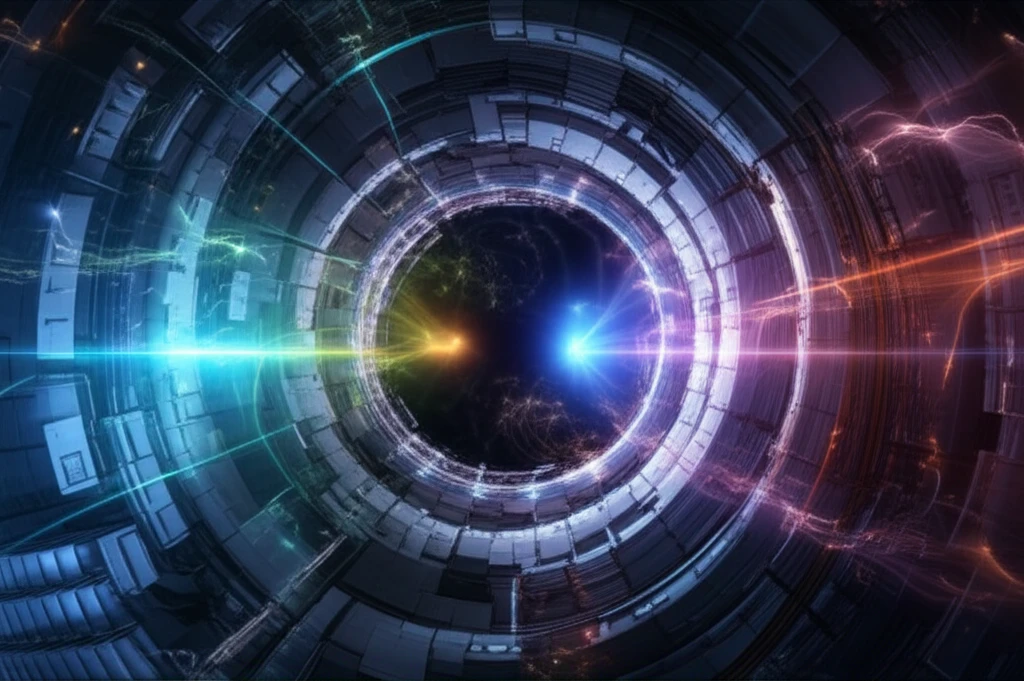
Unlocking the Secrets of Particle Decay: What Rare Decays Tell Us About the Universe
"Exploring how the study of rare particle decays could revolutionize our understanding of the universe and its fundamental forces."
The Standard Model (SM) of particle physics stands as a monumental achievement, accurately describing the fundamental particles and forces that govern our universe. The discovery of the Higgs boson in 2012 was a major milestone, solidifying the SM's predictions. Yet, despite its success, the SM leaves many questions unanswered, suggesting that it is incomplete.
One promising avenue for exploring physics beyond the Standard Model lies in the study of rare particle decays. These decays, though infrequent, can reveal subtle deviations from SM predictions, hinting at new particles and interactions. By precisely measuring the properties of these decays, physicists hope to piece together a more complete picture of the universe.
This article delves into the study of rare, exclusive hadronic decays of electroweak bosons, focusing on the work of Matthias König and his collaborators. It explores how these decays can be used to test the Standard Model, probe the properties of the Higgs boson, and potentially uncover new physics at future colliders.
QCD Factorization: A Window into Particle Behavior

To understand rare particle decays, physicists employ a theoretical framework called QCD factorization. This approach allows them to separate the complex interactions within a decaying particle into calculable hard-scattering functions and non-perturbative hadronic matrix elements. Imagine it like dissecting a complex recipe: QCD factorization helps to isolate the key ingredients (hard scattering) from the nuances of the preparation (hadronic physics).
- Hard-Scattering Functions: These describe the short-distance interactions between quarks and gluons during the decay process, calculated using perturbative QCD.
- Hadronic Matrix Elements: These encode the long-distance, non-perturbative physics within hadrons, representing the probability of finding specific quarks and gluons inside the particle.
- Scale Separation: QCD factorization relies on separating the hard and soft scales in the process. This separation allows for a systematic expansion in terms of the ratio of these scales, improving the accuracy of the calculations.
The Future of Decay Studies: Probing the Universe's Secrets
The study of rare particle decays holds immense potential for unraveling the mysteries of the universe. While the branching ratios for these decays are often small, advancements in experimental techniques and the development of future colliders offer the opportunity to collect vast amounts of data and precisely measure these rare events.
One exciting prospect lies in exploring the Higgs boson's decays. The Higgs boson, responsible for giving particles their mass, exhibits interesting dependencies on the couplings between different particles. By studying how the Higgs boson decays into various final states, scientists can probe the fundamental parameters of the Standard Model and search for deviations that might indicate new physics.
As we push the boundaries of experimental capabilities and refine our theoretical understanding, the study of rare particle decays promises to provide invaluable insights into the fundamental laws that govern our universe. These seemingly insignificant events may hold the key to unlocking the secrets that lie beyond the Standard Model.
